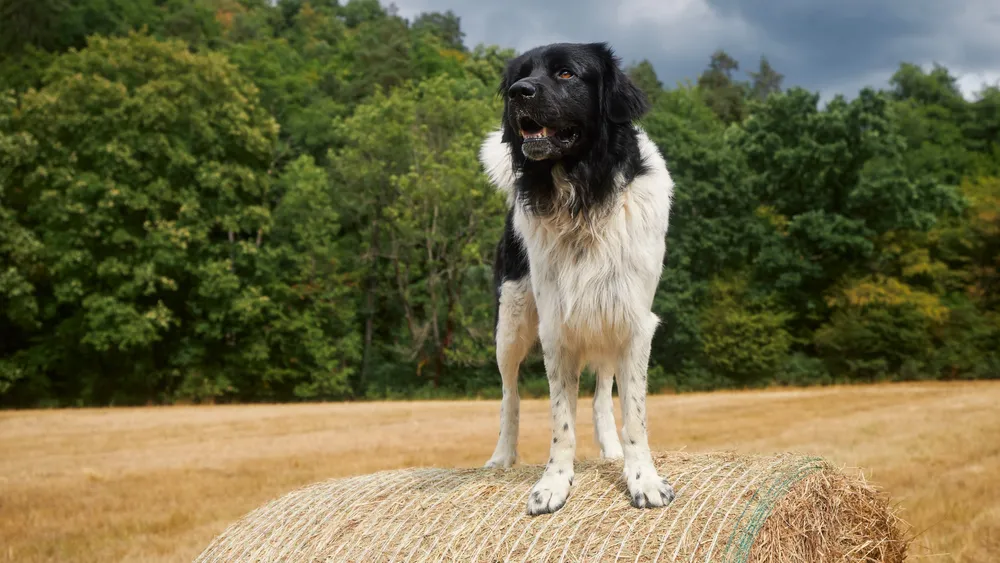Are you considering welcoming a West Highland White Terrier, affectionately known as a Westie, into your home, or are you a new owner puzzled by their unique coat care needs? You're in the right place! This blog post dives into the fluffy world of Westies, unraveling the truth about their shedding patterns and offering essential grooming tips to keep your furry friend looking and feeling their best. Westies are more than just adorable faces; their distinctive white coats require special attention, but don't let that intimidate you!
With our easy-to-follow guide, you'll become a pro in managing your Westie's shedding, ensuring they remain the bright, joyful companion that lights up your life. Let's embark on this journey together, exploring the ins and outs of Westie coat care, debunking common myths, and discovering how to enhance their well-being through proper grooming. Get ready to be armed with knowledge that will make both you and your Westie happier and healthier!
Introduction to Westies and Their Coat
Westie is a breed that captivates with its distinctive white coat, spirited personality, and enduring charm. Originating from Scotland, these small but sturdy terriers have carved a niche for themselves in the hearts of dog lovers around the globe. The hallmark of the Westie lies not just in its vivacious character but significantly in its unique coat. Understanding the peculiarities of the Westie's coat is crucial for potential and current owners alike, as it plays a vital role in their overall health, appearance, and well-being.
The importance of coat care in Westies cannot be overstated. Their double-layered coat, consisting of a soft undercoat and a hard outer coat, requires regular grooming to maintain its pristine condition. Unlike some dog breeds that might have more straightforward grooming needs, the Westie's coat demands a specific regimen to keep it white, healthy, and free of mats. Statistics show that a well-groomed Westie not only looks better but is also healthier, as proper coat care can prevent skin infections and other health issues related to poor grooming practices.
Comparatively, the Westie's coat differs significantly from other breeds. While some dogs have single coats, and others might not require frequent grooming, the Westie’s double coat is both a blessing and a task. It provides insulation, keeping the dog warm in winter and cool in summer, but it also means that owners need to commit to regular maintenance. This includes brushing, bathing, and sometimes professional grooming services to keep their coat in top condition.
A survey by the National Pet Owners indicates that Westie owners spend more time and resources on grooming compared to owners of more low-maintenance breeds.
Setting the stage for a deeper dive into shedding habits, it's pertinent to understand that while Westies are often lauded for being less prone to shedding compared to other breeds, they do shed. The nature of their shedding, how it compares to other double-coated breeds, and the management of their unique coat will be explored in the following sections. This foundational understanding of Westie's coat characteristics is essential for debunking common myths and providing targeted care strategies for these beloved terriers.
The Truth About Westies and Shedding
West Highland White Terriers are often celebrated for their bright white coats and vibrant personalities. However, there's a common misconception regarding their shedding habits that has puzzled both prospective and current Westie owners alike. Contrary to popular belief, Westies do shed, albeit differently from many other breeds. Understanding the nature of their coat and shedding patterns is crucial for maintaining their iconic appearance.
The Westie's coat is a double coat, consisting of a soft, dense undercoat and a rough, longer outer coat. This double-layered coat serves as insulation, protecting the dog from both cold and hot weather extremes. The uniqueness of their coat means that shedding in Westies is not as straightforward as it is in single-coated breeds. Instead of shedding continuously throughout the year, Westies experience seasonal shedding. During this time, they shed their undercoat, which can sometimes go unnoticed due to their outer coat catching much of the loose fur. This process is natural and helps the dog to regulate its body temperature effectively.
Seasonal shedding in Westies typically occurs during the spring and fall, aligning with significant temperature changes. During these periods, owners might notice an increase in shedding, although it's usually not excessive. The amount and frequency of shedding can vary from one Westie to another, influenced by factors such as genetics, health, and care routines.
A study on canine genetics and coat types suggests that variations in certain genes can affect the texture, length, and shedding patterns of a dog's coat, which could explain the differences observed in shedding among Westies.
Understanding the truth about Westies and shedding is the first step in debunking common myths surrounding their coat care. It's essential to recognize that while Westies do shed, their unique double coat requires specific attention to manage shedding effectively. This knowledge sets the stage for exploring the various factors that influence shedding in Westies, including diet, grooming habits, environmental conditions, and underlying health issues. By addressing these aspects, owners can ensure their Westies maintain a healthy, vibrant coat year-round.
Factors Influencing Shedding in Westies
West Highland White Terriers, popularly known as Westies, captivate hearts with their distinctive white coats and lively personalities. However, maintaining their pristine appearance requires understanding the various factors influencing their shedding patterns. While it's a common misconception that Westies don't shed due to their short and dense fur, they do indeed shed, albeit less noticeably than some other breeds. This shedding can be influenced by several key factors, including diet, grooming habits, environmental conditions, and underlying health issues.
Diet plays a pivotal role in the health of a Westie's coat and its shedding tendencies. High-quality dog food rich in omega-3 fatty acids, proteins, and vitamins can significantly improve coat health, leading to stronger hair follicles and less shedding.
A study published in the Journal of Animal Physiology and Animal Nutrition found that dogs fed diets high in omega-3 and omega-6 fatty acids had significantly improved coat conditions. Thus, incorporating foods with these nutrients into your Westie's diet can be a crucial step towards managing shedding.
Grooming and coat maintenance are equally essential in managing a Westie's shedding. Regular brushing removes loose fur and dander from the coat, which not only minimizes shedding but also distributes natural skin oils throughout their fur, maintaining its health and sheen. Moreover, professional grooming sessions can help in thoroughly detangling the coat, trimming it to a manageable length, and addressing any skin issues that might contribute to abnormal shedding.
Environmental factors also significantly impact shedding in Westies. Seasonal changes can lead to increased shedding as dogs naturally prepare for warmer or colder months. Additionally, indoor factors like dry air from heating systems during winter can dry out their skin, leading to increased shedding. Utilizing humidifiers and maintaining a stable, comfortable environment can help mitigate these effects.
Lastly, health issues must not be overlooked as potential causes of excessive shedding. Conditions such as allergies, dermatitis, or even stress can lead to abnormal shedding patterns. Regular veterinary check-ups can help identify and treat any underlying health problems, ensuring your Westie's coat remains healthy and vibrant.
Understanding these factors is crucial for any Westie owner looking to manage shedding effectively. With the right diet, grooming habits, and environmental adjustments, it’s possible to significantly reduce shedding and keep your Westie's coat in top condition.
Grooming Tips to Manage Shedding
Westie boasts a distinctive double coat that requires regular maintenance to keep it looking its best and to manage shedding. Despite a common misconception, Westies do shed, although typically less than some other breeds. To effectively manage their shedding and maintain their coat's health, certain grooming practices are paramount.
First and foremost, selecting the right grooming tools is essential for Westie owners. A high-quality slicker brush is ideal for daily brushing as it helps to remove loose fur and prevent matting without harming the undercoat. For the dense undercoat, a de-shedding tool or a fine-toothed comb can reach deeper into the fur, removing dead hair and undercoat that a slicker brush may miss. It's important to choose tools that are specifically designed for dogs with double coats to ensure effective grooming without damaging the skin or coat.
Establishing a regular grooming routine is critical for managing shedding in Westies. Daily brushing is recommended to remove loose fur and distribute natural oils throughout the coat, keeping it healthy and minimizing shedding. During peak shedding seasons, typically spring and fall, increasing the frequency of brushing can help manage the higher volume of shed fur. Moreover, incorporating a monthly bath with a gentle, best dog-specific shampoo can help remove dirt, debris, and any additional loose fur, further reducing shedding. However, it's crucial to avoid over-bathing, as this can strip the coat of its natural oils, leading to dry skin and increased shedding.
Techniques for brushing and reducing shedding also play a significant role in coat maintenance. When brushing a Westie, always brush in the direction of hair growth to avoid discomfort and ensure the removal of as much loose fur as possible. For areas prone to matting, such as behind the ears and under the legs, gentle detangling with a comb before brushing can prevent pulling and discomfort. Regular trimming around the feet, ears, and hygiene areas not only keeps your Westie looking neat but also helps in managing shedding by removing areas where fur can easily mat and trap shed fur.
The importance of professional grooming sessions cannot be overstated. While a regular home grooming routine is vital, professional groomers can provide deep grooming services that might be difficult to achieve at home. They have the tools and expertise to thoroughly de-shed the coat, trim nails, and even identify any potential skin and coat issues early on. Scheduling professional grooming every 4-6 weeks can significantly contribute to managing shedding and maintaining the overall health of your Westie's coat.
As we've explored the essential grooming practices to manage shedding in Westies, it's clear that a comprehensive approach involving the right tools, regular routines, and professional care is key.
Introducing the Fi Smart GPS Tracking Dog Collar
For West Highland White Terrier owners, ensuring the safety and well-being of their furry friends is a top priority. The Westie's adventurous spirit and curiosity can sometimes lead them into uncharted territories during outdoor escapades. This is where the Fi Smart GPS Tracking Dog Collar comes into play, offering a blend of technology and peace of mind for dog owners.
The Fi GPS collar is designed to address this concern head-on, providing real-time tracking capabilities that allow owners to monitor their Westie's location directly from their smartphone. This advanced collar utilizes GPS and LTE-M technology to deliver precise location details, ensuring that even if your Westie wanders off, you can quickly and easily find them. The importance of such technology cannot be overstated, especially considering the small size and agile nature of Westies, which can sometimes make them hard to spot in outdoor settings.
Beyond its tracking capabilities, the Fi collar is built with the modern dog owner in mind. It boasts a range of features that make it a must-have accessory for any Westie owner. For instance, the collar is designed to be waterproof and durable, capable of withstanding the rough and tumble play sessions Westies are known for. Additionally, it comes with a long-lasting battery life, reducing the need for frequent recharging and ensuring that the tracking function is always available when you need it most.
Integrating the Fi Smart GPS Tracking Dog Collar into your Westie's daily routine is straightforward. The collar's lightweight design ensures that it is comfortable for dogs to wear for extended periods, and its adjustable strap means it can fit Westies of different sizes. Once set up, the companion app offers a user-friendly interface, making it easy to monitor your pet's activity levels, set up safe zones, and receive alerts if your Westie ventures beyond predetermined boundaries.
Supporting Your Westie's Coat Health
The coat of a West Highland White Terrier (Westie) is one of its most distinctive features, requiring specific care to maintain its brilliance and health. Nutrition plays a pivotal role in ensuring a healthy coat and minimizing shedding. A balanced diet, rich in omega-3 fatty acids, vitamins, and minerals, can significantly enhance the texture and resilience of a Westie's coat.
According to a study published in the Journal of Animal Physiology and Animal Nutrition, diets supplemented with omega-3 fatty acids have been shown to improve coat conditions in dogs. This underscores the importance of selecting high-quality dog foods that meet these nutritional standards or incorporating omega-3-rich foods like fish oil into your Westie's diet.
In addition to a well-rounded diet, supplements can also support coat health. Biotin, also known as Vitamin H, is often recommended for improving hair health in humans and has similar beneficial effects on dogs. It contributes to healthier, stronger hair and can reduce shedding when added to a dog's diet, as supported by various canine health sources. However, it's essential to consult with a veterinarian before introducing any supplements to ensure they're necessary and suitable for your Westie.
Regular veterinary check-ups play a crucial role in maintaining a Westie's coat health. Skin conditions, allergies, and hormonal imbalances can lead to excessive shedding and other coat problems. Early detection and treatment of such issues can prevent them from escalating and adversely affecting the coat's condition. Veterinarians can also provide tailored advice on diet and care to address any specific needs your Westie might have, ensuring its coat remains healthy and vibrant.
Lastly, creating a comfortable and stress-free environment is crucial for minimizing stress-related shedding in Westies. Stress can have a significant impact on a dog's physical health, including its coat condition. Ensuring your Westie has a safe, quiet place to retreat to, along with regular exercise and playtime, can help mitigate stress levels and promote a healthier coat. Engaging in activities your dog enjoys and providing lots of affection can also contribute to a happier, healthier Westie with a beautiful, resilient coat.
By combining optimal nutrition, appropriate supplements, regular veterinary care, and a stress-free environment, Westie owners can significantly support their dog's coat health. This comprehensive approach not only enhances the appearance of the coat but also contributes to the overall well-being of the Westie, setting the stage for a deeper exploration into the specific grooming techniques that can further manage shedding and maintain coat health.
Conclusion
In conclusion, while Westies do shed, proactive measures can significantly reduce the impact. A combination of grooming, nutrition, and attentive healthcare can make the shedding process more manageable, allowing you to enjoy the delightful company of your West Highland White Terrier.
FAQs
- What is the typical shedding season for Westies?
- Shedding in Westies can vary, but it often increases during seasonal changes, particularly in the spring and fall.
- Q: Can a Westie be considered hypoallergenic?
- A: While no dog is entirely hypoallergenic, Westies are known for producing fewer allergens than some other breeds, making them a potential choice for individuals with allergies.
- Q: How often should I groom my Westie to minimize shedding?
- A: Regular grooming, including brushing and baths, is recommended at least once a week to keep shedding under control.
- Q: Are there specific dietary recommendations to control shedding?
- A: A well-balanced diet rich in essential nutrients, especially omega-3 fatty acids, can contribute to a healthier coat and reduced shedding.
- Q: Can allergies be the sole reason for excessive shedding in Westies?
- A: Allergies can contribute to shedding, but other factors such as genetics, grooming practices, and overall health also play crucial roles. Regular veterinary check-ups can help identify and address underlying issues.
Want more articles about dog shedding?




